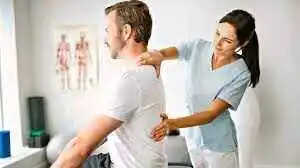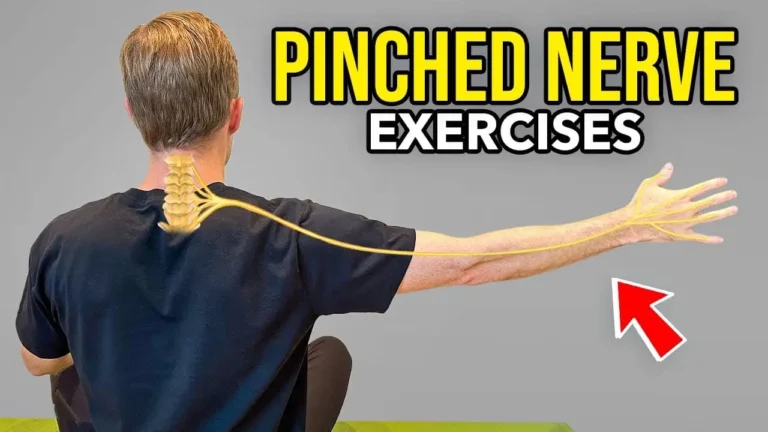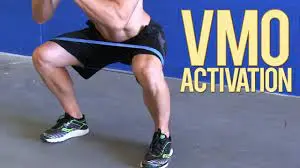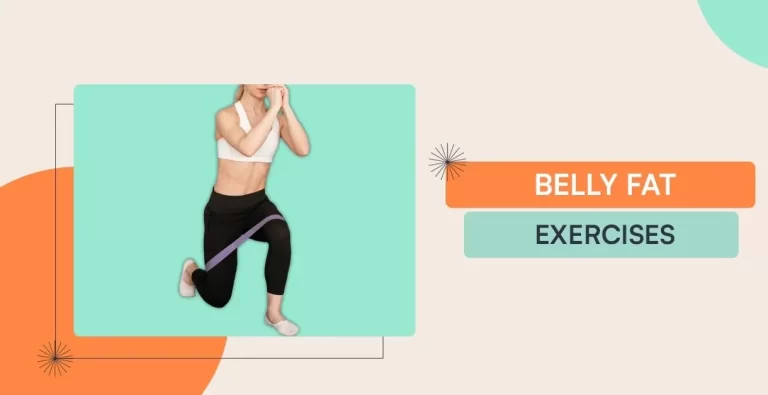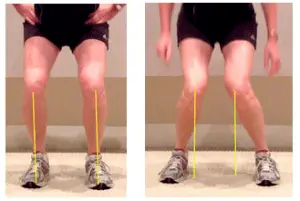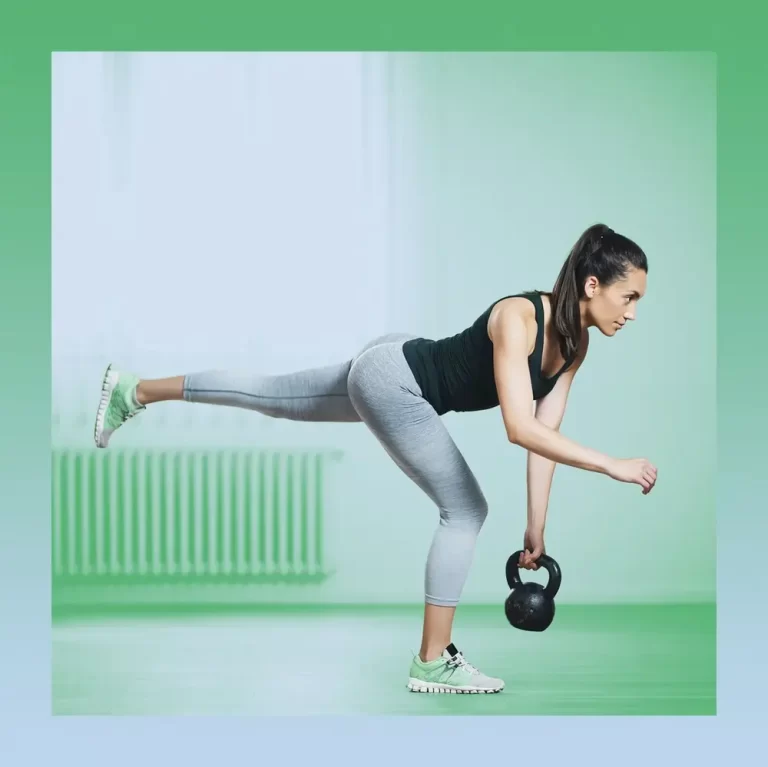18 Best Posture Correcting Exercises
Introduction:
Posture-correcting exercises work the muscles that support your spine and improve your overall posture. Proper posture is necessary for maintaining good health and avoiding pain and injury. It could help with improving your confidence and physical well-being.
We continuously look at screens in our daily lives, which not only harms our eyes but also causes us to constantly have bad posture. Furthermore, bad posture alone can lead to a lot of health issues, including headaches, back and neck pain, and even breathing difficulties. You may eventually be able to adjust or restore your posture with a routine that includes yoga, stretches, and spine-lengthening exercises.
Correct posture helps your body become more balanced, flexible, and strong. All of these may lead to less pain in the muscles and more energy all day long. Maintaining good posture can also reduce the strain on your ligaments and muscles, which reduces the possibility of injury.
Maintaining an upright posture may help individuals with mild-to-moderate depression feel less tired, optimize positive effects, and decrease negative self-focus.
Correct Posture:
Standing, sitting, and lying down all require the postures listed below.
Lying down
- It is possible to have good posture when lying on one’s side or back.
- Remain upright with your back straight and avoid bending at the waist.
- Pain in the back may be relieved by placing a pillow between the lower back and between the legs.
- Stay away from sleeping on your stomach because the rotation of your neck will strain your shoulders, back, and neck too much.
Standing
- Place your feet shoulder-width apart and upside-down as you step onto the foundation.
- Take a straight posture and place your arms by your sides, as though a line is being drawn upward from your head.
- Keep your stomach contracted as you slowly go to your spine.
- Maintain chin level with the floor.
Seated at a table or desk
- Maintain a straight back and back shoulders while sitting.
- Keep your feet flat on the ground.
- Stay away from cross-leg seating.
- Keep your shoulders back and loosen up your forearms on the flats.
- It is ideal to have both ears in line with your collarbone and your chin at around eye level with the floor.
Typical causes for poor Postures:
While there are numerous reasons why people have bad posture, the following are some of the most common:
- Improper ergonomics
Poor posture might result from a poorly constructed desk or from using electronics in uncomfortable situations. You can strain your neck and shoulders, for instance, if you stoop over a computer screen or use your phone to text.
- A sedentary way of life
Individuals with bad posture are more likely to spend a lot of time sitting or lying down. This is because inactivity can cause the muscles that maintain proper posture to weaken and atrophy.
- Injuries
Neck, shoulder, or back injuries can also result in bad posture. This is the result of the surrounding muscles may be getting weaker or tighter in an attempt to prevent damage.
Treating the underlying cause of the problem is important for fixing poor posture and preventing long-term problems. For example, crunches and planks can help strengthen your weak core muscles. You can increase your level of activity if you lead a sedentary lifestyle by routinely going for walks, rides, or swims. If the ergonomics in your home or business are unsuitable, you can also adjust the way you work or use technological devices.
Advantages of Posture Correcting Exercises:
- Better appearance and confidence
- Increased coordination and balance
- An improved capacity to breathe
- Increased blood flow
- Decreased shoulder, back, and neck pain and stiffness
- Increased stamina
- Improved range of motion and flexibility
- Reduced the possibility of harm
- lower levels of stress
Posture Correcting Exercises:
The goal of the exercises that follow is to improve posture by strengthening and extending your muscles.
Shoulder Blade Squeeze
By strengthening the muscles in the upper back and shoulders, the shoulder blade squeeze is a simple exercise that can help improve posture correction.
Pressing the shoulder blades together and holding that position for a short while before releasing it is the goal of this exercise. For those who spend a lot of time working or sitting in front of a computer, it’s an excellent exercise for Posture Correction.
- Place your feet flat on the ground when standing.
- To prevent rounding your back, shift your weight forward slightly.
- Maintain the proper alignment of your hips, ears, and shoulders.
- Arms extended above you, push shoulder blades together.
- Hold this position for a few seconds.
- Then return to your neutral position.
- Then relax.
- Repeat this exercise five to ten times.
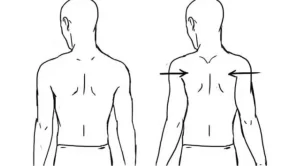
Chin Tuck
The chin tuck is an easy Posture Correction exercise that may help in correct posture and the treatment of neck pain. The alignment of the head and neck may be improved by progressively pulling the chin inside toward the neck.
For those who look at a computer or phone screen for extended periods, this is a great form of exercise.
- Take a straight seat, place your ears squarely over your shoulders, and face front.
- Put one of the fingers on the mandible.
- Pull the chin and head straight back without moving the finger until the top of the neck and base of the head feel well stretched.
- Hold this position for a few seconds.
- Again, move the chin forward to the finger.
- Then return to your neutral position.
- Then relax.
- Repeat this exercise five to ten times.
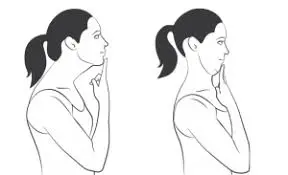
Seated Twist
A quick and easy way to improve spinal mobility and relieve tension in the neck and back is to perform a sitting twist exercise.
For those who have trouble with their backs or hips, or who spend a lot of time sitting down, this is an excellent exercise.
- With your legs out in front of you, take a seat on a yoga mat.
- Breathe deeply while maintaining both feet on the ground’s surface and your knees near your chest.
- Lower your left leg so that it rests against your right buttock.
- With your left knee pointing upward and your right ankle at your left knee, raise your right leg and place it over your left leg.
- Put the right leg into the body.
- Do this at any level of comfort your body allows.
- Take a breath, then exhale and rotate to the right, putting the left elbow outside the right knee.
- Hold this position for a few seconds.
- Then return to your neutral position.
- Then relax.
- Repeat this exercise five to ten times.
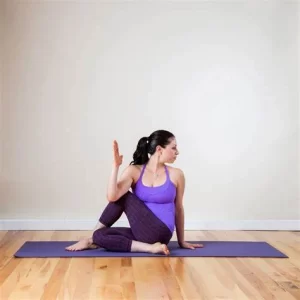
Doorway stretch
- Step inside an open doorway.
- Stretch each arm out to the side, keeping your elbows 90 degrees bent and your palms facing forward.
- Grasp the door frame with your hands.
- Try lowering your elbows a little bit if this is too uncomfortable.
- Take a single, slow step forward.
- In your shoulders and chest, feel the pressure.
- Avoid stooping or bending forward while standing.
- Hold this position for a few seconds.
- Then return to your neutral position.
- Then relax.
- Repeat this exercise five to ten times.
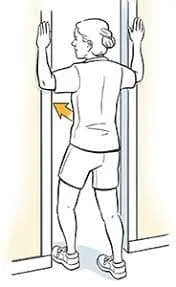
Quadruped Thoracic Rotation Stretch
Expanding the chest and turning the spine gradually lessens while improving stability and range of motion.
- Place your hips on the soles of your feet as you roll over onto all fours.
- Stretch your right elbow out to the side and place it behind your head.
- Your left hand should remain behind your shoulder or be raised to the middle and rested on your forearm.
- Swing your right elbow up toward the sky to expand the front of your body and release the breath.
- Breathe deeply in and out while in this position.
- Hold this position for a few seconds.
- Releasing your grip will allow you to go back to where you were before.
- Then relax.
- Repeat this exercise five to ten times.

Pigeon Pose
Your glutes, hamstrings, and spine can all be relaxed with this hip-opening pose.
- With your knees below your hips and your hands slightly in front of your shoulders, sit on your lower back.
- Arrange your right foot so that it is bent to the left and place your right knee behind your right wrist.
- Plant the heel of your right foot on the ground.
- Place your thigh on the floor, extend your left leg, and straighten your knee.
- Verify that your left leg is back and straight.
- Stretching your arms in front of you, slowly lower your body until you are resting on your inner right leg.
- Hold this position for a few seconds.
- To release the pose, slowly return your hands to your hips and raise your back.
- Then relax.
- Repeat this exercise five to ten times.
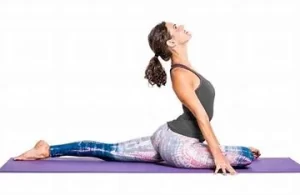
Down Ward Facing Dog
A forward bend that helps balance the body when at rest, Downward Facing Dog is a useful pose. It may help with back pain relief as well as the strengthening and alignment of your back muscles.
- With your wrists below your shoulders and your knees under your hips, go to your hands and knees.
- To raise your hips and straighten your legs, pull your toes under and push back through your hands.
- Press down from the forearms into the fingertips by spreading your fingers.
- Rotate your upper arms outward to widen your collarbones.
- Allowing your head to hang freely, shift your shoulder blades from your ears toward your hips.
- To relieve your arms of the weight bearing on your body, firmly contract your quads.
- The position becomes much more of a resting pose with this action.
- Press your heels down toward the floor, turn your thighs inside out, and maintain your head up.
- Then return to your neutral position.
- Then relax.
- Repeat this exercise five to ten times.
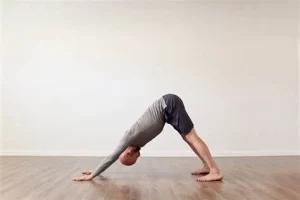
Plank
The plank pose strengthens the muscles in the shoulders, back, core, glutes, and hamstrings, which helps with posture. It even promotes the spine’s proper alignment.
- Start in the plank position, with your forearms and toes on the ground and your face down.
- Your forearms are pointing forward, and your elbows are exactly below your shoulders.
- You should be staring at the floor and your head is relaxed.
- Using the surrounding muscles, move your lower abdomen in the direction of your spine.
- Maintain a firm upright and straight body from your ears to your toes, without bending or slumping.
- This is the neutral spine position.
- Make sure your shoulders are not pulled up close to your ears but rather are loose.
- Hold this position for a few seconds.
- Then return to your neutral position.
- Then relax.
- Repeat this exercise five to ten times.
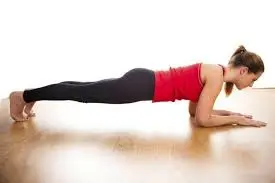
Side Plank
This exercise, which is a variation on the traditional plank, strengthens your glutes and side muscles. Correct positioning and strengthening of these muscles support your back and improve your posture.
- Place your legs outstretched and extended from hip to foot while lying on your right side.
- Exactly below your shoulder is where your right arm’s elbow is.
- Make certain the back of your head and your spine are parallel.
- On the left side of your body, you can position your left arm.
- Your abdomen should be pressed closer to your spine as you contract your abdominal muscles.
- Breathe out and lift your knees and hips off the mat.
- There are no falling or bending muscles in your body.
- Hold this position for a few seconds.
- Inhale after a few breaths and take a step back to where you were before.
- Then relax.
- Repeat this exercise five to ten times.

Chest Stretch/Towel Stretch
A fundamental posture correction exercise that can help with posture is the chest stretch, which involves extending the muscles in the chest and shoulders. The objective of this exercise is to raise your arms and press your shoulder blades together while keeping your chest open.
For those who spend a lot of time hunched over a computer, it’s a great kind of exercise.
- Breathe deeply a few times and find a comfortable place where you can stand.
- Raise your arms backward straight, hold a towel, or curl your fingers behind your back.
- Stretch your arms away from your body and squeeze your shoulder blades together.
- Maintain an open chest and relaxed shoulders.
- Try to keep your shoulders loose and your chest open.
- Hold this position for a few seconds.
- Once the stretch is released, lower your arms back to your sides.
- Then relax.
- Repeat this exercise five to ten times.

Standing Cat Caw pose
This standing pose, which is a modified version of the traditional Cat-Cow, reduces tightness in the hips, glutes, and back.
- Spread your feet hip-width apart and gently bend your knees.
- Your hands should stay on your thighs or in front of you.
- Raise your chin to your chest, extend your neck, and round your spine.
- Hold this position for a few seconds.
- Next, raise your chest, tilt your head, and bend your spine in the opposite direction.
- Hold this position for a few seconds.
- Then return to your neutral position.
- Then relax.
- Repeat this exercise five to ten times.
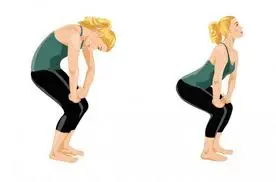
Glute Bridges
Glute bridge works to strengthen and stimulate your glutes, which helps to ease pain in the back. This leads to better hip and pelvic alignment and function, resulting in improved posture.
- Lie flat on your back with your feet hip-distance apart and your knees bent.
- Your hips and feet should be spaced around one foot apart.
- Arms relaxed, palms facing down, alongside your body.
- Release the breath as you straighten your spine and lift your hips toward the sky.
- Hold this position for a few seconds.
- Lower your body.
- Then return to your neutral position.
- Then relax.
- Repeat this exercise five to ten times.
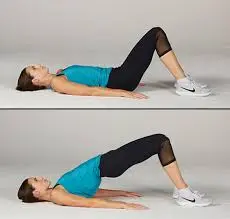
Hip Flexor Stretch
This stretch helps improve posture by gently spreading the hips and improving balance and coordination.
- Place your right knee on the floor behind yourself and plant your left foot firmly on the ground before you.
- Throughout this exercise, maintain a tall trunk.
- Put your hands on your left leg to keep your balance.
- Slowly slide your right leg back as you feel a slight stretch in the front of your hip.
- To pull your trunk and hips closer to your left foot, squeeze your right glute as though you were pushing forward.
- Hold this position for a few seconds.
- Then return to your neutral position.
- Then relax.
- Repeat this exercise five to ten times.
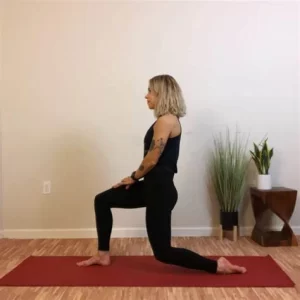
Mountain Pose
One easy yoga position that might help with posture is called Tadasana, or Mountain posture. Mountain Pose involves several elements of proper posture and focuses on vertical body alignment.
- When standing, position your feet hip-width apart or closer together.
- Place the toes on the floor after lifting and spreading them wide.
- Try not to slump forward or backward as you walk; instead, feel your weight equally distributed across each foot.
- Squeeze the thighs together, lift the kneecaps, and pull the tailbone in just a little bit.
- At the ankles, feel the hips in line with them.
- The legs are straight, but not locked back.
- Take a breath, extend your waist, push your head’s top upward toward the ceiling, and feel your spine maintain straight and long.
- When you bring your fingertips to the floor, let your breath and let your shoulders fall back.
- Carefully press your sternum and chest toward the front of the space.
- As you extend your reach with your fingers further, take a deep breath and raise your arms into a H shape, pulling your palms up to your shoulders.
- Breathe out, letting your shoulders descend away from your ears while keeping your fingers and head raised.
- Breathe and hold for a few seconds.
- Then return to your neutral position.
- Then relax.
- Repeat this exercise five to ten times.
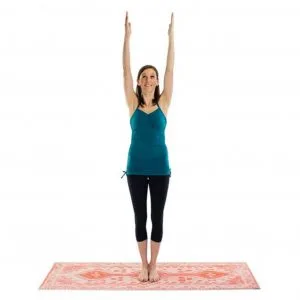
Child’s Pose
A child’s posture is a resting position that people can use in yoga or other forms of exercise, or as part of their normal stretching routine.
- Get down on your knees.
- Sit on your heels, place your big toes together, and then spread your knees so they are about the width of your hips.
- Take a deep breath out, bend forward, and place your body between your legs.
- Your hip points ought to stretch toward the center of your body and settle against your inner thighs.
- Expand the area across the bottom of your pelvis at the sacrum and extend the base of your tailbone outward from your back.
- Lower your chin slightly to create space between the rear of your neck and the base of your head.
- extend your hands out toward the front of your mat.
- Alternatively, release the fronts of your shoulders toward the floor and stretch back toward your feet, resting your arms alongside your body with the palms facing up.
- Allow yourself to be overcome by the force of your shoulders pushing your shoulder blades apart over your back.
- Hold this pose for a few seconds.
- To stand up, extend your front body first.
- Then, elevate your lower back as it presses into your pelvis while taking a deep breath.
- Then relax.
- Repeat this exercise five to ten times.

Cat-Caw Pose
The cat-cow pose improves blood flow and spinal flexibility while calming your neck, shoulders, and chest.
- Starting in the tabletop posture, place your hands and knees on the floor.
- Please ensure that your back is straight.
- To stay grounded, use both your hands and your feet.
- Lift your head, take a deep breath, and let the fresh air fill your belly.
- Hold this position for a few seconds.
- Then exhale, lower your chin into your chest, lean your head back, and let go of the breath.
- It’s a gentle stretch of your lower back.
- Hold this position for a few seconds.
- Then return to your neutral position.
- Then relax.
- Repeat this exercise five to ten times.

Wall angels
Wall angels are an easy-to-do exercise that helps with posture and lower back problems. Anyone who spends a lot of time sitting or stooped over a desk will benefit greatly from this exercise.
- With your back towards a flat wall, your knees bending slightly, and your feet approximately six inches from the wall, position yourself.
- Raise your hands against the wall and raise your arms to shoulder level, bending your elbows 90 degrees.
- Using a “snow angel” motion, slowly raise and go your arms while maintaining your hands and elbows firmly up against the wall.
- Hold this position for a few seconds.
- Then return to your neutral position.
- Then relax.
- Repeat this exercise five to ten times.
- Throughout the exercise, make sure to maintain a relaxed posture with your back flat on the wall.
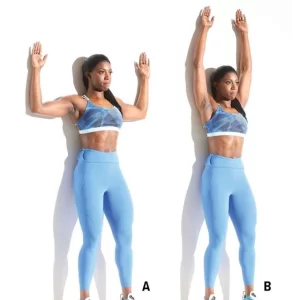
Bird Dog
Your lower back muscles are strengthened by the bird dog.
- Bend your knees on the ground or on an exercise mat.
- Maintain a hip-width distance between your feet and knees.
- Gently lean forward and lay your hands on the mat.
- Put them squarely below your shoulders.
- Maintain your fingers pointing forward and your hands shoulder-width apart.
- Put your knees exactly below your hips.
- You can get into a neutral posture by tensing your abdominal and core muscles.
- Avoid falling your back excessively or arching your back overly.
- Stretch and straighten your left leg and right arm slowly.
- Maintain a parallel hip and leg position with the floor.
- Hold this position for a few seconds.
- Then return to your neutral position.
- Then relax.
- Repeat this exercise five to ten times.
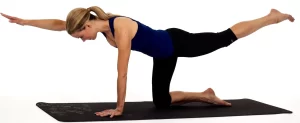
What safety measures should be followed when exercising?
- When doing the exercise, keep your posture correct.
- Correctly extend, hold, and repeat the exercise.
- Stay away from difficult exercise routines.
- Avoid painful exercises.
- Should an unexpected ache arise, stop exercising.
- Take a break in between exercise sets.
- Wear loose clothing so that you can move freely when working out.
- Stretch your muscles if they are stiff, but never feel uncomfortably painful.
When did you stop this exercise?
- You’re sick and showing signs.
- Stop exercising if it hurts.
- A vision that is blurring
- Fever
- Headache
General recommendations on improving posture:
- Consider your posture when you engage in routine activities like walking, watching TV, or completing household chores.
- Maintain your physical activity level by engaging in frequent aerobic, strength, or stretching exercises.
- Put on supportive arch shoes that are cozy and have a low heel. A person’s center of gravity is altered by high-heeled shoes, which can increase strain on the muscles and joints, particularly the knees.
- Keep your weight within a healthy range because excess weight can strain your joints and ligaments and weaken your abdominal muscles.
- If you use desks and tables for eating or working, be sure they are the proper height.
Summary:
A combination of overall balance, joint mobility, and muscle strength is needed to develop and maintain proper posture. It can help to wear supportive footwear, exercise frequently, and increase body awareness.
If a large portion of your workday is spent sitting down, it might be advantageous to modify your workspace to a more comfortable structure. It could be helpful to look for methods to include additional movement, such as taking a quick lap around the room at the top of the hour.
FAQs
What is the reason behind bad posture?
Poor posture can have many different reasons, but some of the most prevalent ones are injuries, medical disorders, sedentary lifestyles, muscle weakness or imbalance, and poor ergonomics.
Can bad posture be corrected with yoga?
Yes, Bad posture can be improved with yoga practice. Yoga poses that stretch the muscles and joints can help with mobility and range of motion. Additionally, yoga develops the core muscles, which are essential to keeping proper posture.
What is an exercise for postural correction?
Strengthening the muscles that maintain good posture and stretching the muscles that are usually shortened and tight as a result of poor posture are the two main types of exercises for improving posture. You may reduce pain and stiffness, align your spine, and increase your range of motion with the help of these exercises.
Do exercises for correcting posture work?
With a combination of yoga, stretching, and spine-lengthening activities, you might be able to improve or adjust your posture over time. More than just looks go into having proper posture. It supports the growth of your body’s strength, flexibility, and balance.
Is it possible to entirely correct posture?
You may still improve your posture even if it has been an issue for years. Once we hit a certain age, slumped shoulders and a rounded posture can appear like permanent features, and it can feel like you missed the opportunity to take on a better posture. However, there’s a strong probability you still have more height.
What symptoms reflect poor posture?
Rounded shoulders.
Bending the knees while moving or standing.
One side of the head is bent slightly.
Back pain.
Aches and pains throughout the body.
How should I sleep to maintain proper posture when sleeping?
Elevate your legs gently toward your chest. Your spine should remain straight even with a head pillow. Your spine may also be supported by a tiny pillow or rolled towel under your waist. In the spaces created by your body and the mattress, place pillows.
Can posture be corrected by physiotherapy?
The goals of physiotherapy care are to increase mobility and lessen pain. Physiotherapists treat patients who have musculoskeletal problems, such as poor posture, fractures, arthritis, and back, neck, and shoulder pain.
Which type of exercise is most effective for improving posture?
The most effective exercise for posture correction is not a single one. Planks, wall angels, shoulder blade squeezes, cat-cow stretches, chest stretches, glute bridges, and sitting twists are a few of the beneficial exercises. These focus on several muscle groups that support proper posture.
How can posture be improved the most quickly?
The quickest way to improve posture is to use ergonomic support equipment, practice regular posture exercises, and keep an awareness of your posture while going about your everyday activities.
Is it possible to fix prolonged poor posture?
Yes, you can progressively improve your general alignment and fix the effects of years of poor posture with regular effort, understanding, and exercise.
Why Does Good Posture Matter?
Developing good posture is the first step to improving your long-term health. Keeping a proper posture increases balance, flexibility, and strength. Maintaining your posture correctly will boost your energy levels and lessen muscle soreness. As you correct your posture, you’ll become more aware of your physical state. If you exercise good posture, it will be simpler to correct. As time passes, the habit gets easier.
References:
- June 22, 2023; Hospitals, M., & Hospitals, M. You should attempt these 8 posture correction exercises right now. Manipal Medical Center. The eight best posture correction exercises you should try right now are available at https://www.manipalhospitals.com/blog.
- On December 13, 2023, Goriya, D. The Top 18 Posture-Correcting Exercises to Help You Look Better. Mobile Clinic for Physiotherapy. Posture-correcting exercises: https://mobilephysiotherapyclinic.in/
- S. S. a. E. Physiology (2022, September 17). Sydney Sports and Exercise Physiology: How to Adjust Posture Exercises. Sydney Physiology of Exercise and Sports. What is the correct way to perform posture exercises?
- As stated by Eske (2023a, February 13). Better posture exercises and advice. Summary: https://www.medicalnewstoday.com/articles/325883
- On July 13, 2023, Cronkleton, E. Twelve posture-enhancing exercises. We line. poses-exercises on https://www.healthline.com
- On July 3, 2023, Turetsky, L. Ten upper and lower back posture repair exercises. Back Intelligence. Better posture exercises: https://backintelligence.com
- Image 10, L. I. Pt. (2022b, Sept. 22). Method for Doing the Towel Chest Stretch. well-fitted. Pectoral stretch exercise: https://www.verywellfit.com/how-to-2696346
- Image 11, 2020, June 30; Sgadf. The Top 10 Workouts for Better Posture. Here are the top 10 exercises to enhance your body posture 154210: https://sgadf.com/. https://sgadf.com/sgadf_news/details
- Image 14, Online Store 48976842 (n.d.). 4976842.html at https://selliliar.live/product_details.

